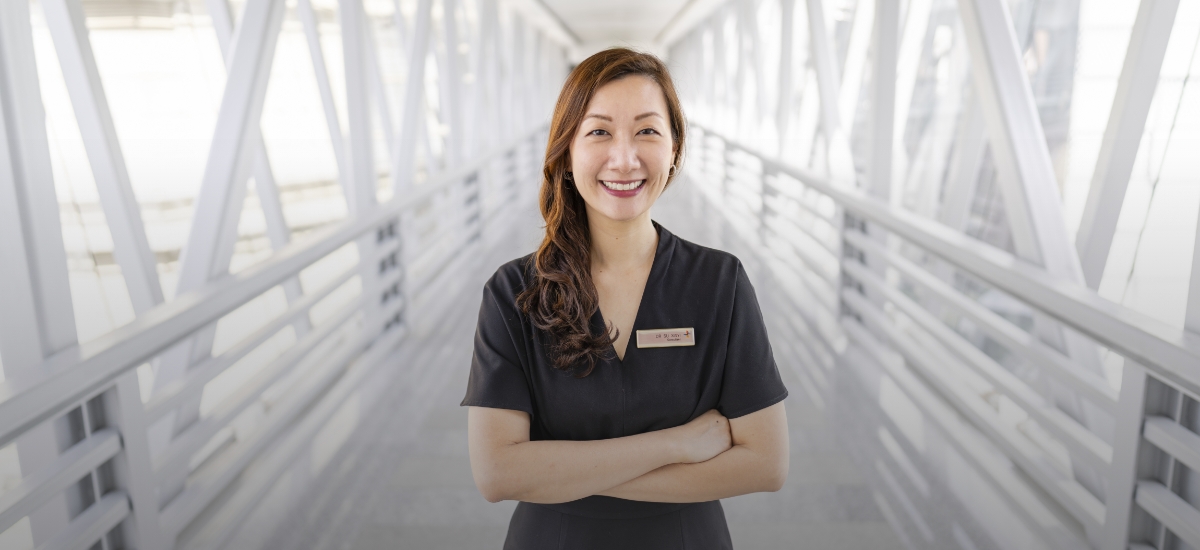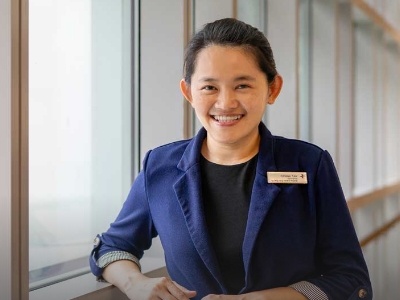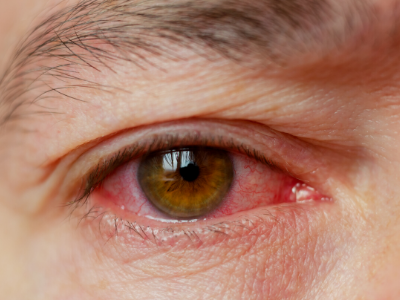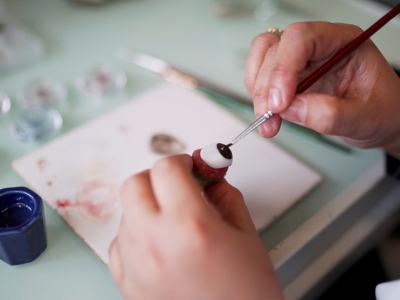Published on 27 June 2024
A/Prof Su Xinyi's research on gene and cell therapy is set to advance new breakthroughs in ageing-related eye conditions.
An inherited retinal condition is like an endless puzzle. There could be well over a thousand genes that might get mutated. While there has been a US Food and Drug Administration-approved treatment available since 2017, it only targets one gene (RPE65).
For A/Prof Su Xinyi, the lack of options for treating retinal diseases and conditions highlight the importance of personalised medicine. These patients go blind because of a gene mutation and so, the idea is to replace the mutated gene to help patients recover. “Every patient with retinal disease has a unique gene mutation, so the treatment that we provide is tailored specifically to the mutations that they have,” explained the clinician-scientist who specialises in ophthalmology (eye) research.
One of her research areas is gene therapy, which involves gene replacement techniques. This even encompasses RNA-editing for inherited retinal disorder (IRD), in which RNA is a DNA-like nucleic acid called Ribonucleic acid, which is present in all living cells. Over the past five years, A/Prof Su has been building a patient cohort (together with her colleagues Dr Chan Hwei Wuen and Dr Wendy Wong) for clinical trials. With their help, she seeks to develop special treatments for mutations that are more unique or prevalent in the Singapore population.
“Precision medicine, particularly in innovative gene and cell therapy, has transformed ophthalmology clinical practice. This brings hope to patients suffering from currently untreatable and blinding retinal diseases,” shared A/Prof Su. She is currently an Associate Professor at the Department of Ophthalmology, NUS Yong Loo Lin School of Medicine (NUS Medicine), and a Senior Consultant Vitreo-retinal Surgeon at the National University Hospital (NUH). In addition, she holds a joint position at the Agency for Science, Technology and Research (A*STAR) as the Executive Director at the Institute of Molecular and Cell Biology (IMCB).
This synergy of her medical background and research interests in developing biomaterials and translational stem cell therapeutics for eye diseases makes her the perfect “bridge builder” who can translate scientific discovery into clinical use.
Innovations to put Singapore at the forefront of research and medicine
One of A/Prof Su’s eye research projects has resulted in the formation of a company that will manufacture a recently patented product. This bio-gel, which is still in its test phase, is intended to be a next generation vitreous substitute for retinal detachment surgery.
In current clinical practice, an oil or gas filler is injected into the eye. Patients then need to maintain a particular head position (posture) post-op or endure a second surgery to remove the oil, which is not biodegradable. With the new thermosensitive gel which solidifies from liquid to jelly after being injected into the eye, and biodegrades thereafter, patients will have an easier recovery and enjoy improved vision immediately.
Besides gene therapy and biomaterials breakthroughs, A/Prof Su also looks into innovations in cell therapy, which are last options for patients with end-stage age-related macular degeneration (AMD) — the third leading cause of blindness globally. According to a 2014 study in which A/Prof Su was involved, AMD affects 8.7 per cent of those aged 45 to 85 worldwide, and the number of persons with AMD is projected to grow from 196 million to 288 million by 2040, in part due to a global ageing population and high incidence in Asia.
Said A/Prof Su, “In AMD, retinal pigment epithelium (RPE) cells in the retina degenerate with age due to the accumulation of oxidative damage.” She added, “The idea is to grow these cells in a [petri] dish and then inject them into the eye, so that they will replace that lost population of cells — to help patients regain vision.”
While this method of treatment is not new, what makes it unique is the source of cells she uses in its development — cells derived from the umbilical cord. By doing so, this greatly reduces the chance of rejection or the need to use immunosuppressants. The young cells are then reprogrammed into stem cells and differentiated into RPE cells. “The hypothesis is that pregnancy is an immune miracle,” she explained. “Mums don’t reject their foetus, so we think that there is something special intrinsically about the cells in the umbilical cord.”
With lab results (preclinical data) looking positive, A/Prof Su added, “We are a small nation facing an ageing population. It is very important for Singapore to leverage on multi-disciplinary research to tackle age-related problems. I strongly believe that in Singapore, we can punch above our weight, thanks to our sturdy scientific foundation.”
In consultation with A/Prof Su Xinyi, Senior Consultant, Department of Ophthalmology, NUH; and Associate Professor, Department of Ophthalmology, NUS Medicine.




